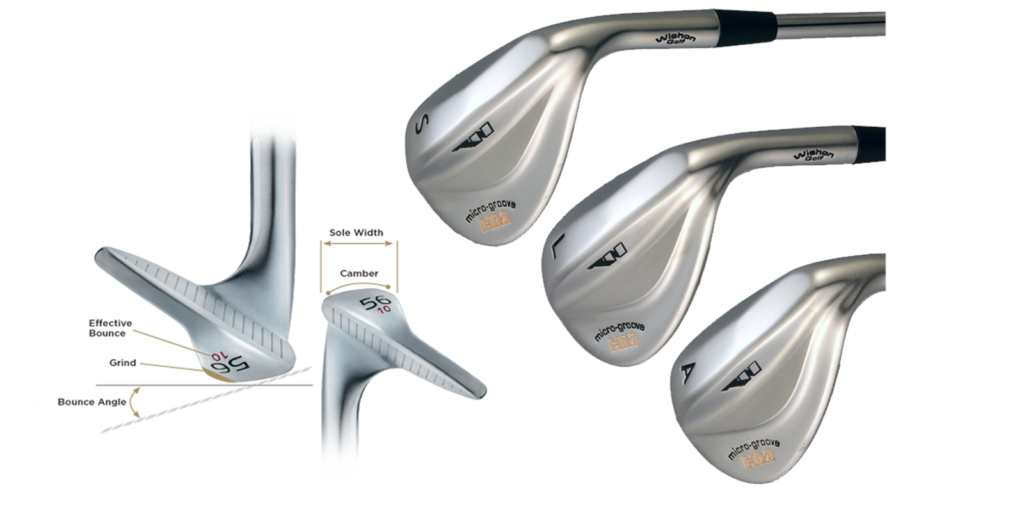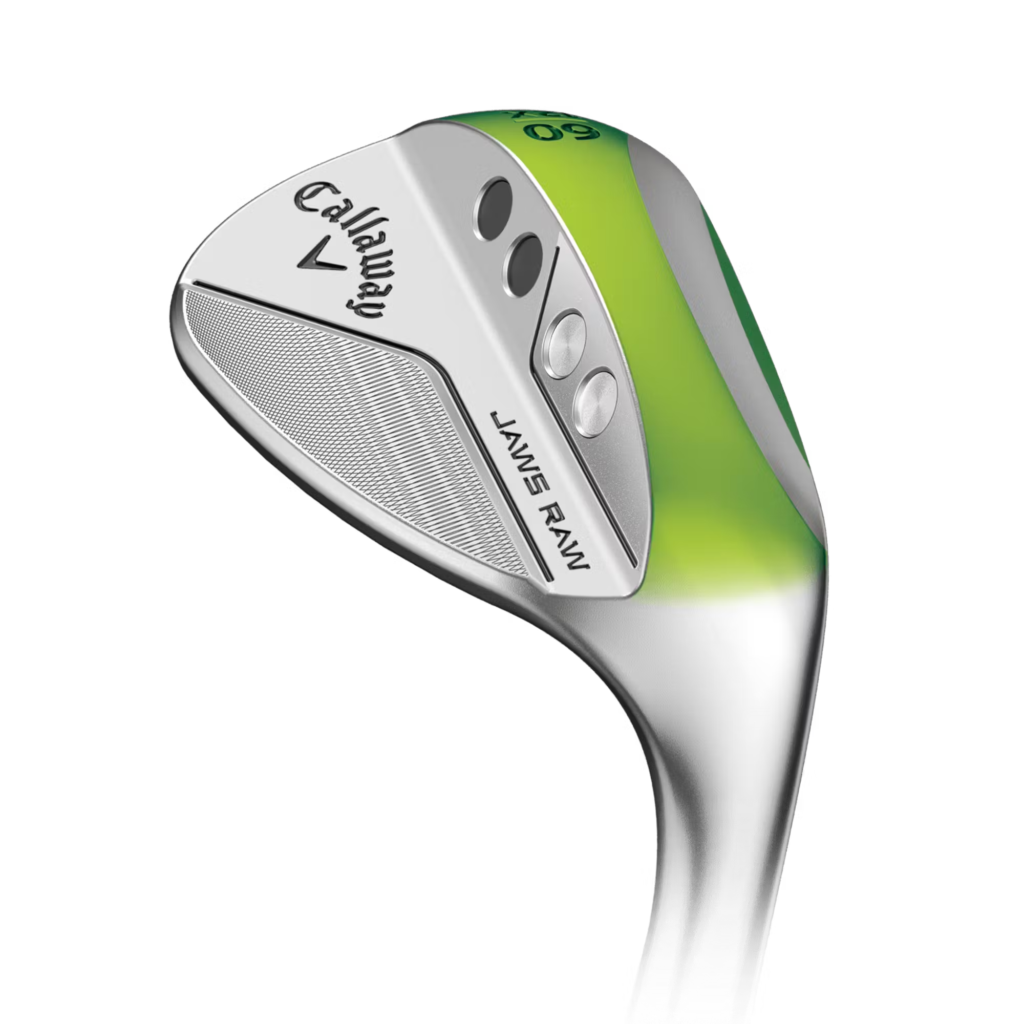Join Our Senior Golfers Newsletter!
Sign up today and receive your free Golf After 60 Bonus Stretch Guide!
In the game of golf, the short game often separates the average players from the exceptional ones. Among the most critical clubs in a golfer’s arsenal are the golf wedges, which play a pivotal role in executing delicate shots around the green and navigating challenging terrain. For senior golfers, having the right selection of golf wedges can make a significant difference in their ability to score well and enjoy the game to its fullest. In this comprehensive guide, we’ll explore the essential wedges that senior golfers should consider adding to their bag, along with tips on how to optimize their use to enhance performance and enjoyment on the course.

The gap wedge, also known as the approach wedge or utility wedge, is a must-have for senior golfers. With a loft typically ranging from 50 to 54 degrees, this wedge fills the distance gap between the pitching wedge and sand wedge. Its primary purpose is to provide precise control when approaching the green from distances of around 100 yards. For senior golfers, the gap wedge can be a valuable asset in achieving accurate shots with increased loft and spin, allowing them to land the ball softly on the green. Moreover, this wedge provides versatility in various lies and shot angles, making it a reliable tool for seniors to navigate challenging terrains.
As the name suggests, the sand wedge is crucial for escaping bunkers and handling shots from sandy lies around the green. Most sand wedges have a loft angle between 54 and 58 degrees, promoting high shots with ample spin. Senior golfers, who may not possess the same strength they had in their younger years, often find the sand wedge beneficial in navigating various types of sand traps. Its wide sole and specialized bounce design help seniors maintain confidence and control even from challenging lies. Moreover, the sand wedge’s design allows for effective shot-making around the green, making it an indispensable tool for seniors to improve their short game accuracy.
The lob wedge, with its loft typically ranging from 58 to 64 degrees, is a versatile tool for senior golfers looking to finesse their short game shots. This wedge excels in situations where a high, soft shot is required such as clearing hazards, hitting pitches with precision, or when faced with delicate shots around the green. With its steep angle of attack and increased loft, the lob wedge enables seniors to add another level of finesse to their short game, providing options for creative shot-making. Whether it’s a flop shot over a bunker or a lob shot over an obstacle, the lob wedge empowers senior golfers to elevate their game when finesse and accuracy are paramount.
While not exclusively a wedge for senior golfers, the pitching wedge plays an essential role in their bag due to its versatility. Usually wielding a loft angle between 44 and 48 degrees, the pitching wedge allows seniors to make controlled shots with moderate distance. It is exceptional for full swings or approaches to the green from around 100 to 130 yards, depending on an individual’s strength and swing speed. The pitching wedge acts as a reliable go-to club for senior golfers, offering a balance between distance and precision. With its ability to provide controlled trajectory and accurate shots, the pitching wedge aids in lowering scores by increasing green accuracy while providing seniors with confidence in their medium-length approach shots.
In addition to the aforementioned wedges, senior golfers can benefit from including a utility wedge in their bag. The utility wedge, having a loft angle between a gap and sand wedge, typically ranging from 50 to 55 degrees, provides an excellent option for seniors who desire more shot versatility. This wedge can be employed for various shots, from approach shots to pitches around the green, offering exceptional control and enabling seniors to address different yardages more precisely. The utility wedge can be particularly advantageous for senior golfers who prefer a more minimalist approach, as it combines the characteristics of multiple wedges into a single club, reducing the clutter in their bag while offering diverse shot-making opportunities.
Understanding Bounce in Golf Wedges
Bounce plays a significant role in how wedges interact with the turf and sand, affecting trajectory, spin, and ultimately, the outcome of each shot. In this blog, we’ll delve into the intricacies of bounce in golf wedges, exploring its definition, significance, and practical implications for players looking to elevate their short game prowess.

Defining Bounce:
Bounce refers to the angle between the leading edge and the lowest point of the sole of a wedge. It is essentially the curvature on the bottom of the club that prevents the leading edge from digging too deeply into the turf or sand during impact. This design feature helps the club glide smoothly through various lies, promoting cleaner contact and greater consistency in shot execution.
Significance of Bounce:
a. Turf Interaction: When a wedge makes contact with the ground, the bounce angle dictates how much the leading edge will dig into the turf. Higher bounce angles are better suited for softer turf conditions, preventing the club from digging too deeply and promoting a clean strike. Conversely, lower bounce angles are more effective on firm turf, allowing for better control and precision.
b. Sand Play: In bunker shots, bounce is particularly critical. A higher bounce angle helps the club slide through the sand effortlessly, preventing it from digging too deeply and facilitating the explosion shot. Without adequate bounce, golfers risk hitting behind the ball, resulting in fat shots or inconsistent distances.
c. Shot Trajectory and Spin: Bounce also influences the trajectory and spin imparted on the ball. A wedge with higher bounce tends to produce shots with a higher trajectory and more backspin, while a lower bounce wedge may produce lower, more penetrating shots with less spin.

Types of Bounce:
a. Standard Bounce: Wedges with standard bounce typically have bounce angles ranging from 4 to 10 degrees. These wedges offer versatility for a wide range of turf and sand conditions, making them suitable for most golfers.
b. Low Bounce: Wedges with low bounce angles (0 to 4 degrees) are ideal for firm turf conditions and players with shallow or sweeping swing styles. They provide more control and versatility for shots around the green but may be less forgiving in softer conditions.
c. High Bounce: Wedges with high bounce angles (10 degrees or more) excel in soft turf conditions and bunker play. They are designed to prevent the club from digging too deeply into the ground, making them ideal for players with steeper swing angles or when playing from fluffy lies or bunkers.
Choosing the Right Bounce:
Selecting the appropriate bounce for your wedges depends on various factors, including turf conditions, swing style, and personal preference. Here are some guidelines to consider:
a. Turf Conditions: Assess the typical turf conditions you encounter on the courses you play. If the turf is generally soft or fluffy, higher bounce wedges may be more suitable. For firmer turf, lower bounce wedges may offer better performance.
b. Swing Style: Consider your swing style and angle of attack. Players with steeper swings may benefit from wedges with higher bounce to prevent digging, while those with shallower swings may prefer lower bounce wedges for better turf interaction.
c. Shot Preferences: Think about the types of shots you frequently encounter around the green and the trajectory and spin you prefer. Experimenting with different bounce angles can help you determine which wedges best suit your playing style and shot-making preferences.
Practical Tips for Utilizing Bounce:
a. Experimentation: Take the time to experiment with different bounce angles and observe how they influence your ball flight and turf interaction. Visit a golf store or work with a professional club fitter to test various wedge options and determine which ones best complement your game.
b. Course Management: Pay attention to the turf conditions and shot requirements on the courses you play. Adjust your wedge selection based on the firmness of the turf, the depth of bunkers, and the type of lies you encounter to optimize performance and consistency.
c. Practice: Incorporate wedge-specific practice sessions into your training regimen to develop a feel for how different bounce angles perform in various situations. Focus on executing different types of shots, including chips, pitches, and bunker shots, to hone your skills and build confidence around the green.
Conclusion: Selecting the right golf wedges for senior players is an integral part of their overall game strategy. The gap wedge, sand wedge, lob wedge, pitching wedge, and utility wedge all serve critical purposes, addressing the specific needs and challenges faced by senior golfers. By having these key wedges at their disposal, senior golfers can enhance their control, increase their accuracy, improve their short game finesse, and ultimately elevate their overall performance on the course. Remember, understanding one’s strengths and limitations and customizing the club selection accordingly is key to a successful golfing experience for senior players. So, equip your bag with these essential wedges and watch as your game reaches new heights of precision and enjoyment.

Breakdown of the key aspects of grind in a golf wedge
In the realm of golf equipment, particularly wedges, the term “grind” refers to the shaping or modification of the sole of the club. Grinds are designed to alter the interaction between the wedge and the turf, sand, or rough during different types of shots, offering golfers greater versatility and control in their short game. Essentially, grind options allow players to customize their wedges to suit their playing style, swing characteristics, and course conditions.
Sole Design:
Bounce Angle Modification:
Versatility and Shot-Making:
Customization and Personalization:
When you find yourself in a greenside bunker the objective is not to hit the ball but rather to hit the sand below which will push the ball up. A bunker shot is essentially a fat shot where the club penetrates the sand some 2” behind the ball.

For normal shots in bunkers around the green you will want to use your sand wedge.
This type of wedge usually has around 56 degrees of loft and most importantly features bounce on the trailing edge of the golf club. Both of those features will help the clubhead bounce off the sand (instead of digging into the sand) and propel the ball into a nice trajectory onto the green.
Note that there are situations where bounce is not recommended for bunker shots. For instance, hitting from a bunker with wet sand.

Place your hands and fingers a little lower on the grip of the club than you normally would.
This will translate into a slightly shorter shaft, bringing you closer to the ball and giving you more control. Bunker shots require finesse rather than pure power so the full length of the club is not required in most instances.

For regular bunker shots you will not want to grip your sand wedge as you normally would any other club, i.e., where the face of the club is square to the target.
Rather, you will want to grip the club in your hands so that the clubface is open, pointing to the right rather than square (or at the target).
This will add more loft to the club (shooting the ball higher) and will bring the bounce of the club more in play (and reducing your chances of digging into the sand too deeply).
Note that it is crucial that you place your hands and fingers on your club AFTER first rotating the club inside your hands. This is in contrast to gripping the club normally and opening up the clubface through a rotation of your wrists. The problem with opening the clubface this way is that your mind and body will reposition your wrists – and club – to a square position instinctively on the downswing and into impact with the ball, canceling your setup efforts.

Increase the distance between your two feet so that your stance is a little wider than it would normally be when using a wedge in the fairway.
Around shoulder-width or a little wider is good. This will add stability to your swing, and bring you closer to the ball. Being closer means that you will have an easier time hitting the sand underneath the ball rather than hitting the ball directly.

Open your stance so your feet are pointing left of the target. Doing so will bring your clubface direction more in line with the flag, effectively putting you in a situation where the clubface is pointed just slightly right of the target.

Instead of placing the ball squarely in the middle of your stance as you would when using a wedge in the fairway position the ball a little forward instead.
The idea here is for the clubhead to penetrate the sand approximately 2” behind the ball, to see it travel underneath the ball without touching it directly and to exit the sand some 4” in front of the original position of the ball. Effectively, you are trying to leave a divot that will be around 6” in length in total, or roughly the size of an American dollar bill.

When the location of the ball in relation to your feet and the width of your stance is set it is time to dig your feet into the sand a little.
As with the wider stance, this will give you extra stability and protect you from slipping as you swing and execute your shot. Likewise, it will also bring you closer to the ball slightly, encouraging a ‘fat’ shot that is required for bunker shots. Finally, doing so will give you clues as to how firm the sand around your ball is, which when performed while setting up is allowed under the rules of golf.

Being tentative in the bunker simply doesn’t work. You have to trust that your setup is correct, commit to your swing and go for it.
Deceleration in your swing can result in the ball getting stuck in the bunker and your having to hit the shot all over again. This can be very demoralizing. Note that sand will provide noticeable resistance as the clubhead enters it and you will want to pop the ball up and out of the bunker, both of which take good swing speed and acceleration.

Try to make it a point to integrate bunker practice into your range sessions whenever it is possible.
Vary the length of the backswing and observe how far the ball flies and rolls on the green. Just remember that while the length of the backswing can be altered you should aim to always finish with a full follow through. Doing so will help guarantee swing acceleration into the ball.




